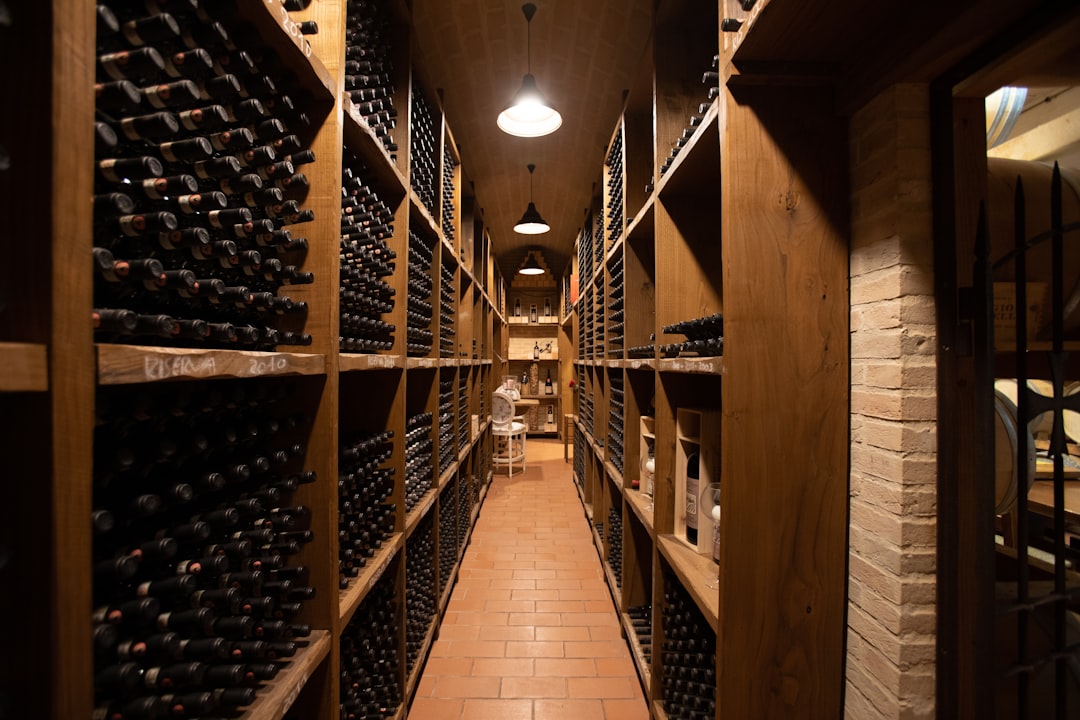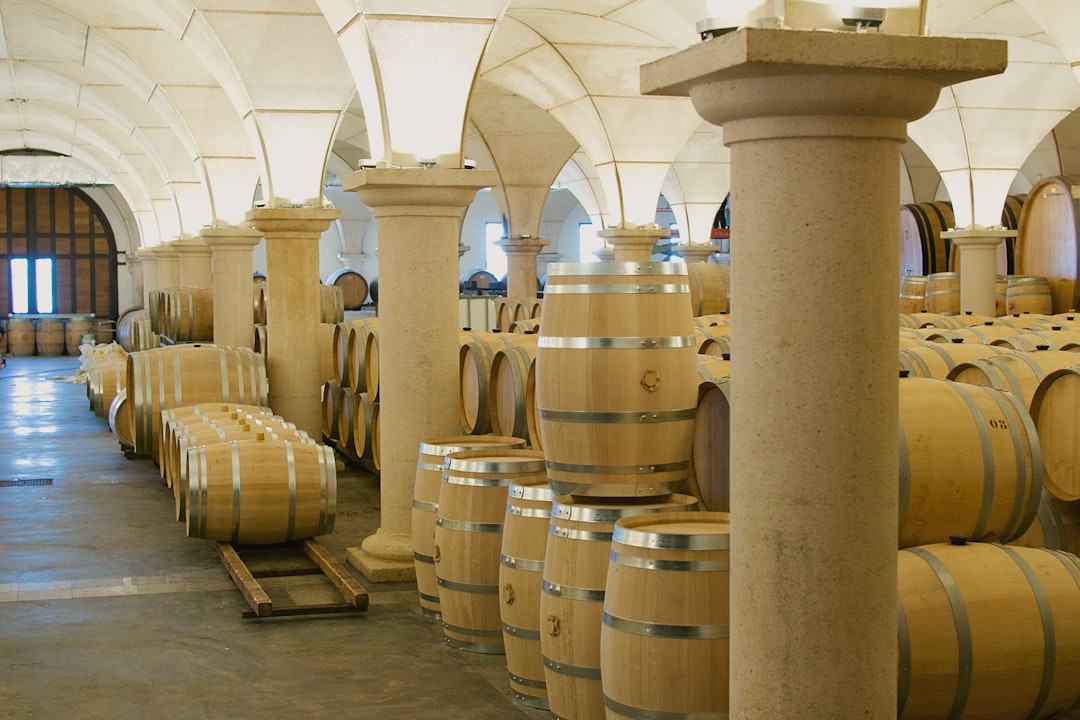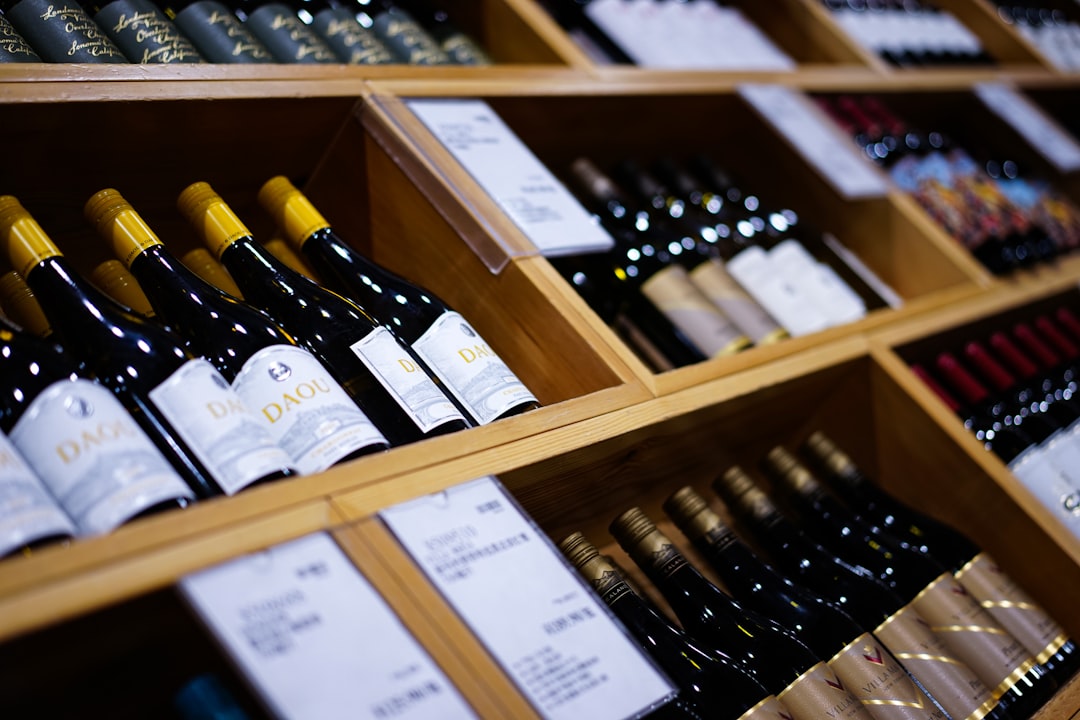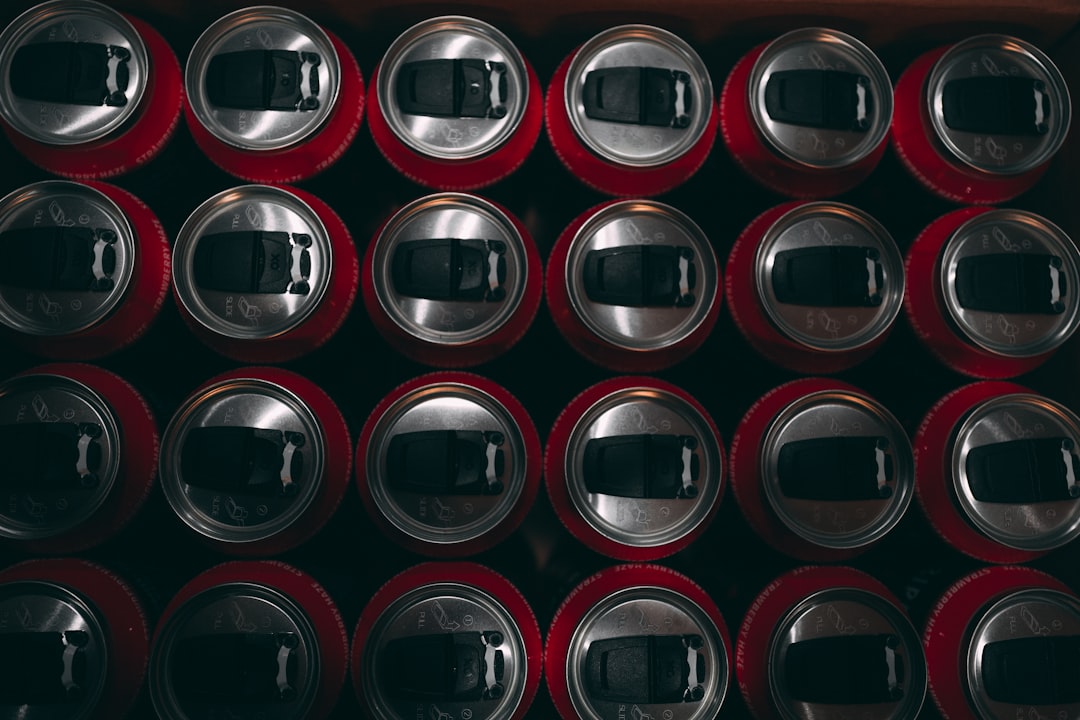

Engage prospects with a scan and streamline customer engagement with FREE QR code marketing tools by Sona – no strings attached!
Create a Free QR CodeFree consultation

No commitment

Engage prospects with a scan and streamline customer engagement with FREE QR code marketing tools by Sona – no strings attached!
Create a Free QR CodeFree consultation

No commitment
Wholesale wine distributors face the ongoing challenge of streamlining operations, engaging buyers and retailers, and driving conversions in an increasingly competitive landscape. When critical buyer signals slip through the cracks, such as high-value prospects browsing your portfolio but never submitting a form, missed opportunities multiply, especially with tight margins and rising competition. Distributors also struggle with ever-changing regulations and a constant need to justify marketing spend, leading many teams to rely on outdated tactics like printed catalogues and paper order forms that rarely yield actionable analytics or prompt follow-up. For a deeper look at why measurement matters, see Sona’s take on revenue attribution.
The absence of a clear, data-driven path from offline marketing to digital engagement means valuable prospects too often remain anonymous, slowing down the sales funnel and offering competitors a window to respond faster. Enter QR codes: a dynamic, cost-effective solution for wholesale wine distributors looking to merge physical marketing with powerful digital outcomes. A single scan can take a potential customer from a printed shelf-talker to a mobile ordering portal, a compliance resource, or a tailored offer, eliminating friction while delivering insights about exactly who is interacting and which assets are driving demand. Real-world examples on wine packaging show how scans convert shelf interest into engagement.
With the right strategy, QR codes provide distributors with real-time engagement data that transforms every print collateral, trade show display, or case label into a seamless touchpoint, closing the gap between interest and measurable action. This guide explores how wholesale wine distributors can leverage QR code technology to maximize conversions, optimize inventory management, and build lasting relationships in a rapidly changing market while addressing persistent challenges like untracked leads, slow buyer follow-up, and limited visibility into true marketing performance.

QR codes have become an essential bridge between the traditional analog aspects of wholesale wine distribution and the efficiency of digital engagement. Distributors often find that important buying signals are missed when prospects explore offers without any actionable next step, resulting in high-value leads never making it into the CRM or sales pipeline. By embedding QR codes on shelf displays, product packaging, order forms, or trade show collateral, distributors can instantly connect buyers and retailers with inventory availability, exclusive pricing, or digital catalogs, while simultaneously tracking every interaction.
Actions such as instant sample requests, streamlined order placements, or the capture of compliance documentation can all be digitized, helping eliminate delays that often occur when waiting for paper forms or calls to be returned. For example, printed tasting event flyers with built-in QR codes empower buyers to register in real time, reducing lead leakage and ensuring prompt follow-up. Modern QR code platforms further allow distributors to edit destinations using dynamic QR codes, automate responses based on scan activity, and sync engagement data with CRM or inventory systems. This equips teams to act on warm opportunities before competitors do and reduces the risk of undeciphered buyer intent.
By intentionally replacing slow, analog workflows with scannable moments that capture intent, wholesale wine distributors can create a cleaner, faster path from interest to order. The result is a more responsive commercial engine that preserves relationship-driven selling while introducing the data and automation needed to compete at scale. Start creating QR codes for free.

Wholesale wine distribution is a relationship-driven industry where speed, insight into buyer intent, and regulatory compliance are crucial for long-term growth. A lack of visibility into who interacts with print or in-person marketing leads to potential buyers remaining anonymous and unpursued, a common cause of disappointing conversion rates and slow-moving inventory. QR codes address these market needs by providing a simple way to convert in-person interest into digital action while maintaining a trackable, compliant workflow.
These benefits translate directly into core outcomes for wholesale wine distributors: faster response cycles, higher conversion rates from events and mailers, improved attribution of revenue to physical assets, and more precise inventory and compliance communication.
When in doubt, use dynamic QR codes for any campaign that needs tracking or frequent updates. Static codes are fine for evergreen materials such as a general contact card or a timeless brand narrative. With Sona QR, you can create any of these formats, host destinations, and update links centrally so printed assets remain useful for longer.

Identify the physical touchpoints that already exist in your go-to-market motion and make them interactive. Small changes to high-traffic assets such as trade show displays and case labels often deliver rapid gains in data capture and conversion; see wholesale QR applications.

These use cases remove common blockers in the wholesale journey, advancing buyers from awareness to action while preserving the documentation and accountability that distributors require. Over time, the data generated from these scans informs smarter portfolio moves and more targeted enablement for sales teams.
The lack of insight into which offline interactions truly drive revenue has historically left wholesale distributors guessing in their follow-up strategies. Every QR code campaign now offers scan-level data so you can segment by journey stage, channel, and location, then deliver personalized outreach that reflects context and intent. For example, accounts that scan at a portfolio tasting have different needs from those scanning an allocation mailer or a compliance link on a pallet tag.
With Sona QR, each code becomes a smart entry point into your funnel, automatically enriching contact records with scan metadata such as source, time, and device. This creates precise retargeting lists such as new indie retailers that scanned a rosé launch flyer or chain buyers who scanned at a regional trade show. For paid media follow-up, use Sona’s playbook on intent-driven retargeting. The result is better-timed, higher-converting outreach.
QR codes turn static assets into measurable gateways that connect offline moments to digital workflows. In wholesale wine distribution, this means every catalog, case, or tasting table can simultaneously educate buyers and capture intent that fuels your pipeline. The key is to weave QR into the channels you already use so the experience feels natural and value-driven.
A centralized platform such as Sona QR makes it simple to manage all codes, track performance, and sync scan data to your CRM and marketing tools. Over time, you will see a connected funnel emerge where offline assets spark digital actions, and digital insights guide smarter offline investments.
A strong QR program starts with clear outcomes, thoughtful design, and rigorous measurement. The steps below help wholesale wine distributors launch quickly and scale with confidence while preserving data integrity and regulatory discipline.
Clarify the specific business problem you want to solve. Common gaps include missing sample follow-up, slow event lead capture, and manual reordering friction for repeat buyers. Pick one high-impact moment such as turning trade-show foot traffic into CRM leads or converting direct mail interest into allocation sign-ups.
Select the format that best supports your use case and level of flexibility. Static codes work for unchanging PDFs or evergreen pages. Dynamic QR codes are best when you need tracking, routing by source, or the ability to change destinations without reprinting.
Strong design increases scan rates and trust. The code should be prominent, contrasted, and surrounded by a clear quiet zone. Pair it with a concise, benefit-driven call to action that tells buyers exactly what they will get from scanning.
Launch where you already see the most offline engagement. Place codes on trade show banners, tasting mats, case labels, rep business cards, direct mailers, and warehouse signage. Include per-channel variants for attribution and optimization.
Use analytics to identify which placements and messages drive the highest scan-to-action conversion. Connect performance back to revenue so you can redeploy budget to what works and refine what does not.
By following these steps, distributors can move from pilot to scaled program with confidence. Over time, expand the initiative to cover more touchpoints and audiences while continuously refining content and placement based on real outcomes.

A persistent challenge for wine distributors has been connecting the dots between offline marketing and actual sales impact. Attribution often breaks when leads stay anonymous, forms go unreturned, or campaign data remains siloed. Advanced QR code platforms address this by capturing structured data at the moment of engagement, then enriching it inside your CRM and analytics tools. For measurement frameworks, see Sona’s guide to offline attribution.
With Sona QR and Sona.com, an AI-powered marketing platform that turns first-party data into revenue through automated attribution, data activation, and workflow orchestration, you can:
The result is a closed-loop analytics system that translates offline engagement into measurable pipeline. This lets leaders prove impact, refine messaging and placements, and systematically grow conversion rates across the distributor’s footprint.
Creative deployments that work well in this vertical include QR codes on invoices that route to a one-click reorder form and QR codes on pallet wraps that unlock compliance packets and tech sheets for retail staff training. These small touches reduce friction for buyers and make your team the easiest partner to do business with.
QR codes are a strategic lever for wholesale wine distributors eager to increase efficiency, improve buyer engagement, and accelerate sales cycles. Each QR code transforms a physical asset into an opportunity to identify, engage, and nurture retailers and on-premise accounts, whether through direct mailers, case labels, or event signage. By integrating offline and online touchpoints, distributors gain clear visibility into which activities drive high-intent engagement and can finally close the loop from scan to sale.
As distributors continue to adapt to digital-first business demands, robust QR strategies allow for quick pivots in inventory, compliance management, and marketing, all while capturing the detailed buyer insights needed to outmaneuver the competition and build lasting, profitable relationships. Sona QR brings this ecosystem together with dynamic codes, centralized management, and CRM integrations, while Sona.com extends the value by connecting scans to revenue through advanced attribution.
QR code technology gives wholesale wine distributors the tools to close key visibility gaps between offline marketing efforts and concrete digital outcomes. By automating the capture of buyer engagement signals, no longer relying solely on manual form fills or guessing which campaigns succeed, distributors can pursue opportunities in real time, target follow-up with precision, and attribute revenue directly to specific touchpoints. In an industry where speed, compliance, and the personal nature of the sales cycle matter, modern QR code integration is increasingly pivotal for informed decision-making and sustainable growth. Ultimately, every scan becomes an opportunity to deepen relationships and drive measurable business results across the wholesale wine distribution ecosystem.
QR codes have transformed wholesale wine distributors from relying on traditional marketing into dynamic, measurable growth engines. Whether it’s acquiring new clients, enhancing buyer experiences with easy access to product details and promotions, or tracking engagement across tastings and events, QR codes turn static labels and materials into powerful conversion tools. Imagine knowing exactly which bottles or campaigns spark the most interest—and being able to optimize your strategy instantly.
With Sona QR, you can create dynamic, trackable QR codes in seconds, update campaigns on the fly without costly reprints, and connect every scan directly to sales performance. No more guesswork or missed opportunities—just smarter, data-driven growth in your wholesale wine distribution. Start for free with Sona QR today and turn every scan into a new customer, a deeper relationship, or a closed deal.
QR codes help wholesale wine distributors convert offline interest into digital engagement, provide real-time buyer insights, enable faster follow-up, improve inventory and compliance management, and increase conversion rates while reducing reliance on paper-based processes.
Wholesalers can replace manual, paper-based workflows with mobile-friendly forms and landing pages accessed via QR codes, automate lead capture and follow-up, track buyer interactions, and sync data with CRM and inventory systems to accelerate sales cycles and reduce errors.
QR codes provide buyers with instant access to live inventory, exclusive pricing, sample requests, compliance documents, and personalized offers through a simple scan without needing app downloads, streamlining their purchasing journey and improving satisfaction.
Common mistakes include using static codes for dynamic content, failing to include clear calls to action, neglecting to test code scannability in real-world conditions, not tracking scan data for performance analysis, and placing codes where they are hard to scan or unrelated to buyer needs.
Latest trends include using dynamic QR codes for real-time content updates and tracking, integrating QR scan data with CRM and ad platforms for personalized retargeting, automating follow-up workflows, and embedding QR codes across multichannel assets such as packaging, trade shows, direct mail, and sales materials.
Use Sona QR's trackable codes to improve customer acquisition and engagement today.
Create Your FREE Trackable QR Code in SecondsJoin results-focused teams combining Sona Platform automation with advanced Google Ads strategies to scale lead generation

Connect your existing CRM

Free Account Enrichment

No setup fees
No commitment required

Free consultation

Get a custom Google Ads roadmap for your business






Launch campaigns that generate qualified leads in 30 days or less.
